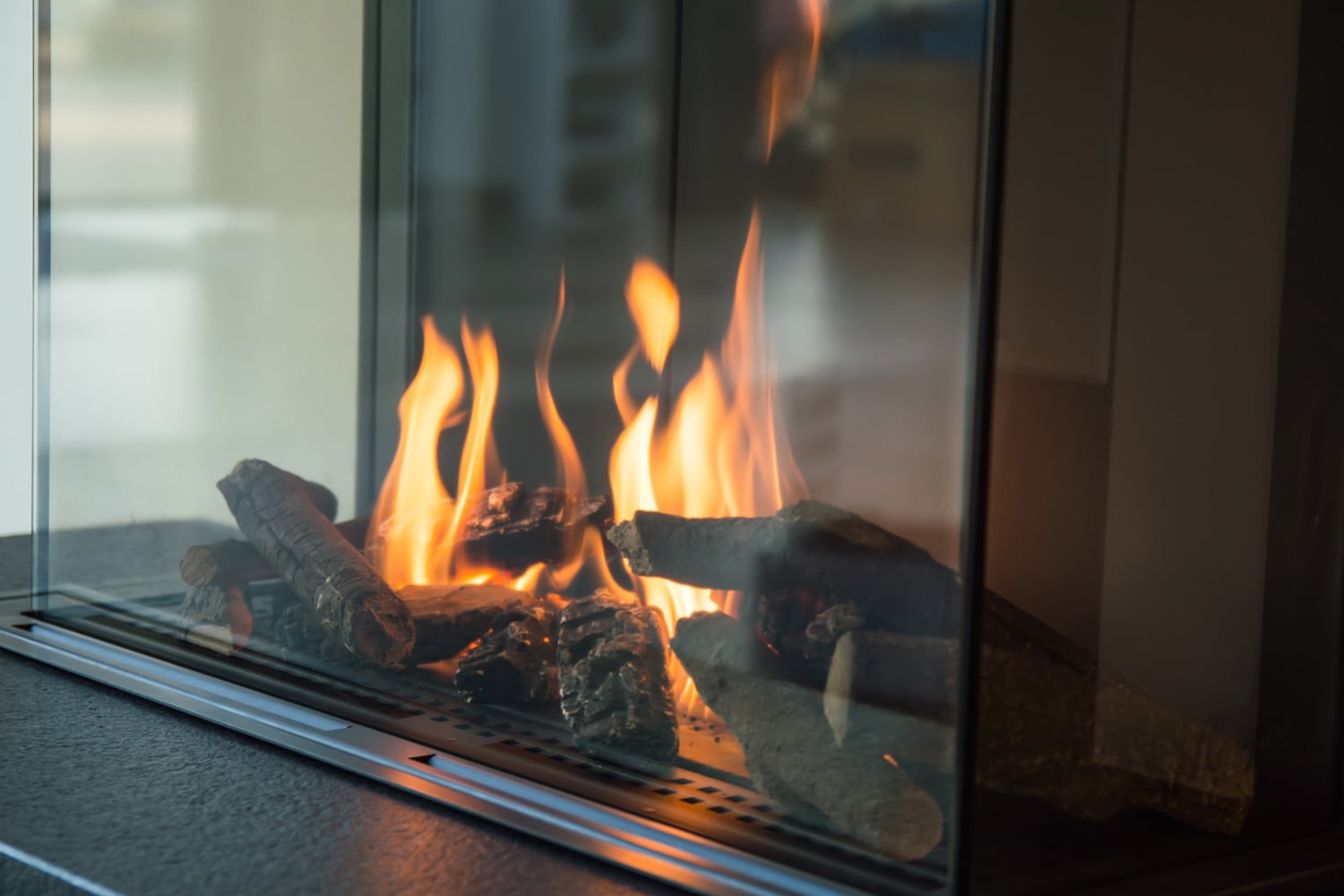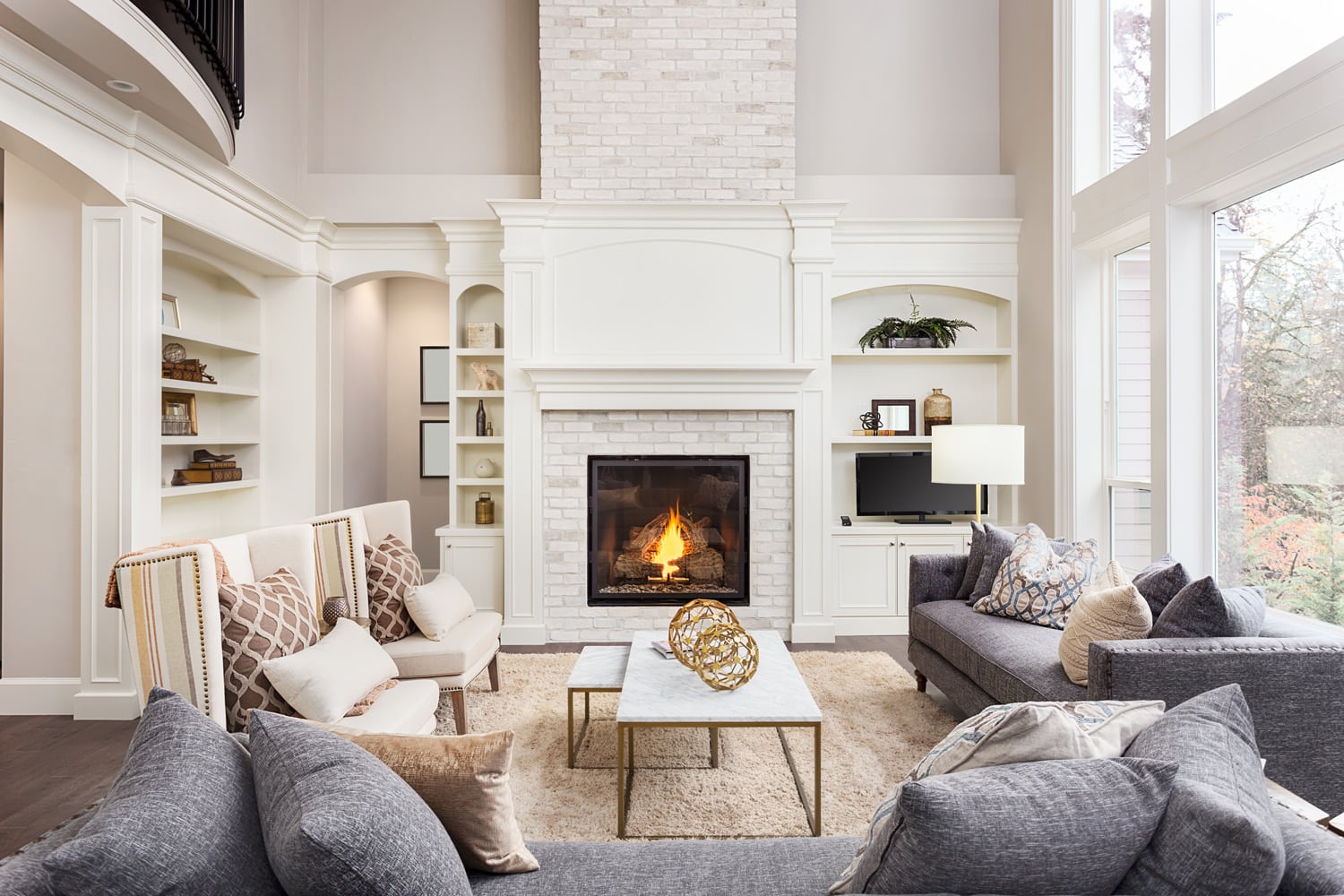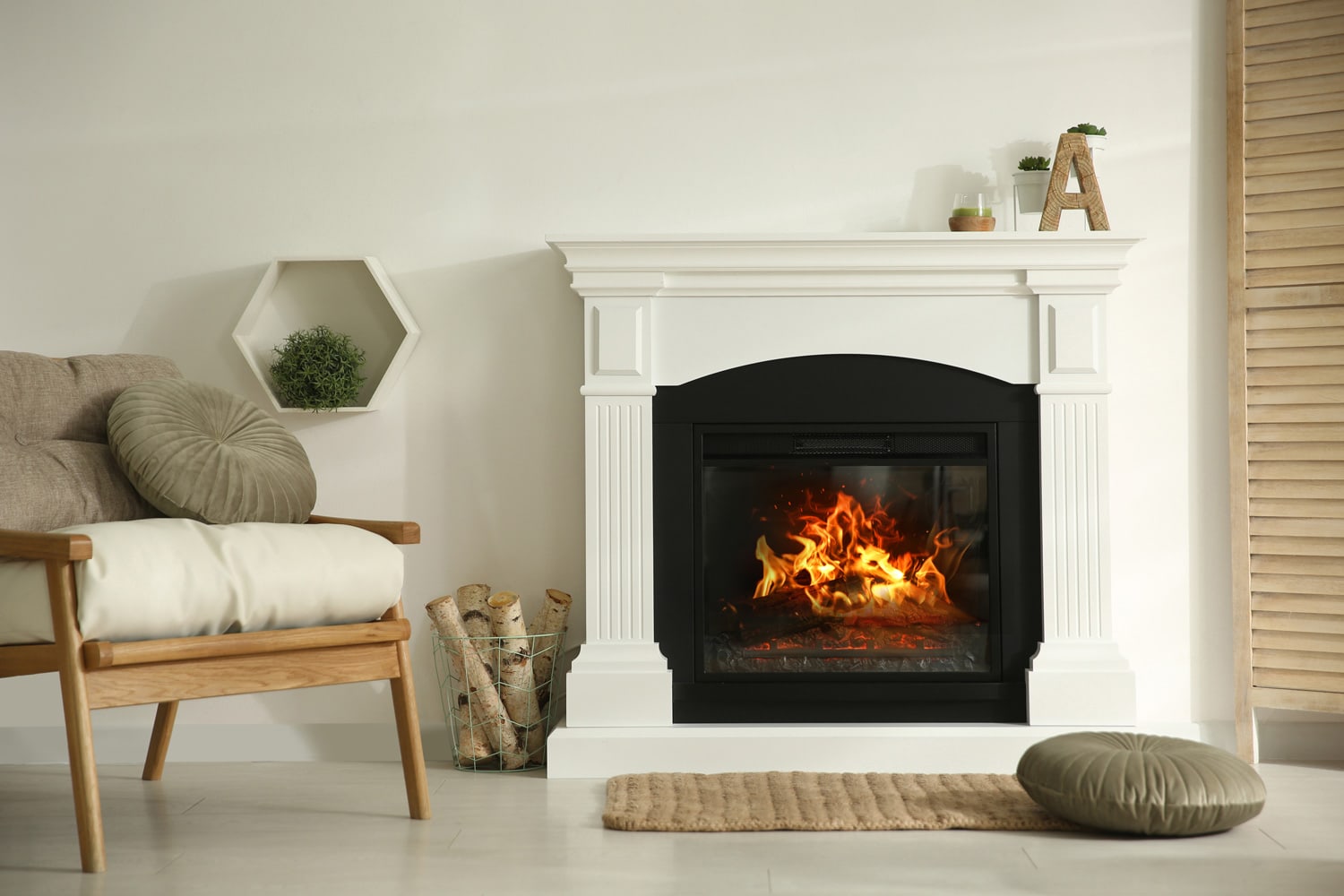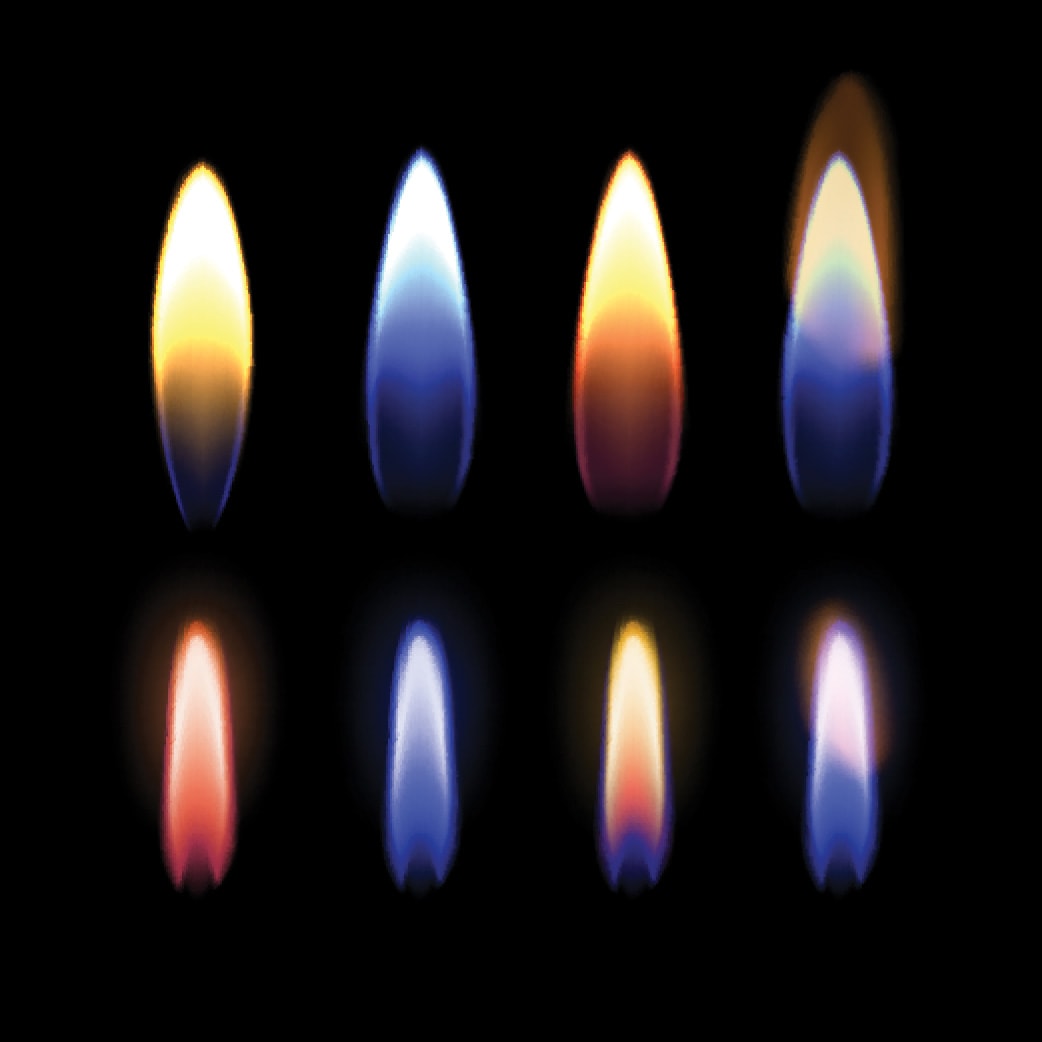Having a gas fireplace in the house spells out convenience, considering the coziness and comfort it provides when it's cold outside. But what if your gas fireplace releases too much heat and causes uneasiness? If you're not sure whether or not it can be adjusted, you're on the right page. We scoured the web for the answer and here's what we found.
When your room is congested with too much heat than what you wished for, you can use the control dial or the remote control of your gas fireplace to adjust your desired heat in the room. You can also check the manual of your purchased gas fireplace to familiarize yourself with how to control it.
Gas fireplaces nowadays are modernized so it's easy and efficient to use, unlike the old ones. Keep reading as we delve into the details of adjusting a gas fireplace and some related frequently asked questions about fireplaces.

How To Adjust Heat On A Gas Fireplace

Here are the tips on how to adjust the heat on your gas fireplace:
- Turn down the heat by putting the thermostat in the low phase until you achieve your desired heat. For more information, look into this post: Do I Need A Special Thermostat For Gas Fireplace?
- Turn on the ceiling fan to distribute heat around the area and to lessen the heat.
- Check the gas regulator, and grab your flathead screwdriver as shown in the video below. Unthread the silver cap of the regulator and you'll see a plastic adjustment inside which will increase and decrease the gas pressure. Turn the regulator counterclockwise to decrease the gas pressure being released and as a result, it will lessen the heat in the room.
- Use the remote control of your gas fireplace and click the arrow down.
- Switch the gas fireplace off if you are getting uncomfortable with the heat that is being produced in the room.
If you can't adjust the heat of your gas fireplace using the tips stated above then you can check your gas fireplace manual which is included in the box when you purchased the item.
Do Gas Fireplaces Really Heat a Room?

Gas fireplaces are effective and efficient in making the room warm. Homeowners crave a fireplace to add up ambiance to help ease off stress. To make it economically friendly, consider following these steps:
- Add up a ceiling fan. Here's one wise tip on actually distributing the heat in your area. Let's say you have a gas fireplace that dispenses heat in 3 square feet, the fan can spread the warmth throughout the entire room.
- Effective usage. If you want to achieve a good ambiance through the flame, don't waste by putting up the gas high. You can alter the flame by using the remote and setting it up to your desired look and letting it burn that way.
- Consider the size. Some homeowners think of having the bigger size is better than having the exact one, but would that be a good decision? Nope. If you want to make it effective and cost-efficient better choose the right size for your gas fireplace. Typically, gas fireplaces release 10,000 to 40,000 BTUs. Multiplying the square footage by 20 BTUs per square foot will give you the exact number of BTUs per square foot needed to heat the space.
How High Should The Flame Be On A Gas Fireplace?
Light up your gas fireplace by opening it. Set the flame height into the standard measurement stated in the manual which is 3.5 inches. Always make an effort to raise your flame to this level.
The altitude and venting arrangement may also have an impact on flame height. The flame in your gas fireplace can be adjusted by using the "Lo-Hi" button. Usually, it can be located below the fireplace.
If you can't see any button then you can use the screw. Adjust it by using a screwdriver and turn it clockwise to reduce the height of the flame. Turn it counterclockwise to increase the flame height.
Which Gas Fireplace Produces The Most Heat?
You need to check out the different types of gas fireplaces on the market before purchasing one. Gas fireplace has 3 main types which are Direct Vent gas fireplace, Vent-Free gas fireplaces, and B-Vent fireplaces. They have different kinds of features, adaptability, and efficacy that make them function in their ways.
Direct Vent Gas Fireplace

A direct-vent gas fireplace draws in clean air and exhausts combustion gas through a single external hole. Direct-vent fireplaces can be vented both horizontally and vertically, in contrast to natural-vent fireplaces. They are a fantastic option for rooms without an existing fireplace opening and chimney because of their flexibility. Additionally, direct-vent fireplaces have a high fuel efficiency.
Vent-Free Gas Fireplace
Check out this ventless gas fireplace on Amazon.
Every flame emits harmful gases, which every fireplace must address in some way. Ventless fireplaces burn very cleanly, minimizing any potentially hazardous byproducts to the point where a vent is not required.
Compared to most other fireplaces, they are a great deal simpler to install. Because you are not paying to heat air that is released outside the house, they are particularly energy-efficient. But make sure to check your local building regulations since ventless fireplaces are not permitted in all areas.
B-Vent (Natural) Gas Fireplace
B-vent fireplaces, also known as natural-vent gas fireplaces, pull air from within the house to fuel the flames before exhaling combustion gases up a chimney. They perform the same tasks as a standard wood-burning fireplace. B-Vent gas fireplaces provide the appearance of authentic wood fireplaces effortlessly.
To sum it up, the gas fireplace that produces the most heat would be the vented ones. Since it provides 70 percent of the heat that remains in the house it also proves its effectiveness. They are also easy to install than the traditional wood-burning units.
On the other side, the most effective type of gas fireplace is those without vents since they don't have any form of ventilation. They prevent any heat loss through vents which makes them 100% efficient.
Should A Gas Flame Be Blue Or Yellow?

The blue flame color simply means that the gas has complete combustion while the yellowish red flames indicate incomplete combustion or a major safety issue. These colors must give us a specific sign of how the gas is doing in our fireplace. Having improper colored flames like the yellowish-red flames signals that something is wrong with your gas fireplace. It can cause some serious combustion-related problems like improper gas flow.
You may conclude that your gas fireplace must have a blue flame color instead of a yellow one. But ironically, burning wood logs produces a yellow flame color.
The flame of a gas fireplace is therefore yellow or orange which adds to a realistic appearance. And having a blue color flame in your gas fireplace is also safe. In case your gas fireplace is malfunctioning, you can determine it through the smell if gas has leakage or if there are other unusual signs from your fireplace.
For safety precautions, contact your HVAC professional right away. Besides, this can also be a sign of improper maintenance of your fireplace.
If you want to learn how to maintain your gas fireplace properly, check out this post: How Often Should You Clean Your Fireplace?
Safety Tips On Using Your Gas Fireplace

To prevent accidents, safety must come first. Observe the following pointers:
- Do not leave the fireplace unattended. Do not run the gas fireplace overnight without any supervision to avoid burning accidents.
- Use safety screens, especially if you have toddlers in the house.
- Distance from the fireplace. Approximately 3 feet distance away from the flames must be observed.
- Do some inspections. You can schedule an inspection with a professional to check your gas fireplace. This will ensure that it is safe to use.
- Invest in fire extinguishers. Make sure to have a working fire extinguisher reserved for emergency cases.
- Proper cleanliness. Check your manual for the proper cleaning of your gas fireplace.
Wrapping Up
Your gas fireplace can be adjusted depending on its type. Usually, you can use the remote control, the switch, and the control dial to achieve your desired heat. While enjoying the heat and comfort your fireplace provides, do not forget the proper maintenance and safety precautions to make the device last longer.
Here are some articles that may help you with your gas fireplace:

